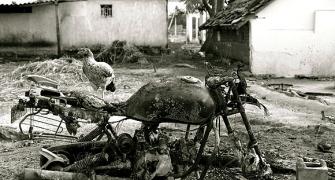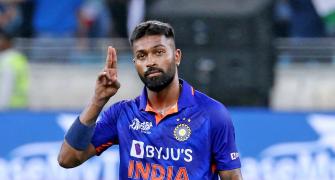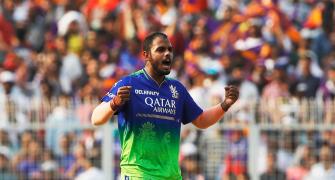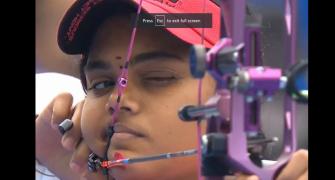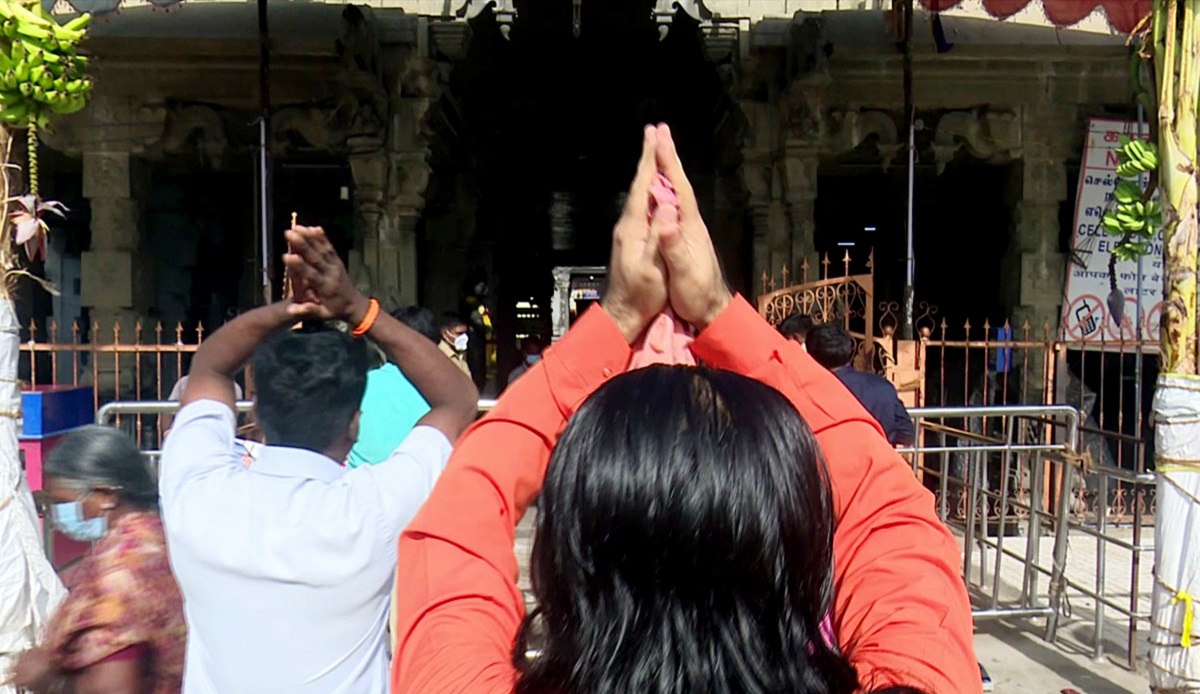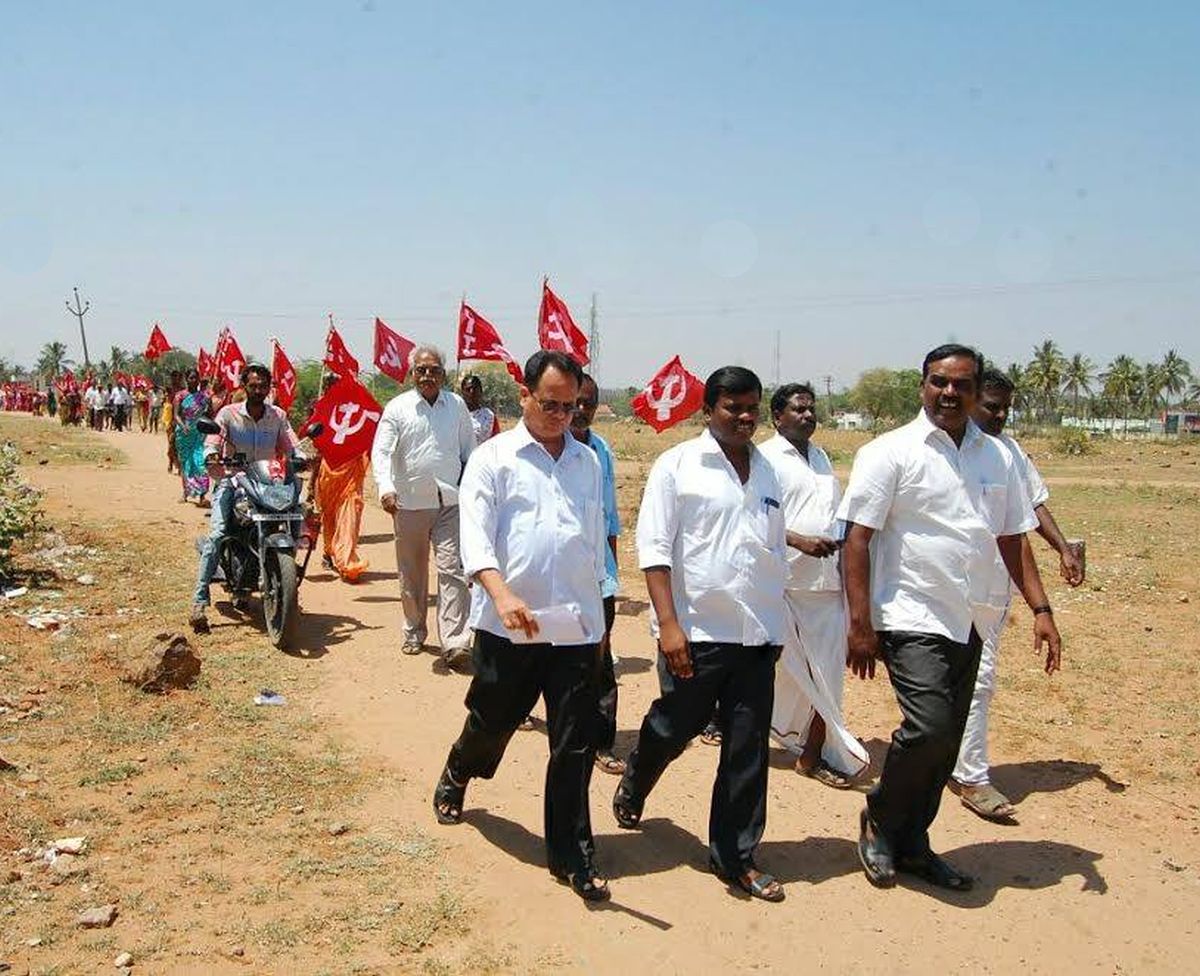Tamil Nadu is the celebrated home of the 'social justice' movement in the country, yet caste differences and violence has only been increasing in numbers and becoming more brutal in recent years, observes N Sathiya Moorthy.
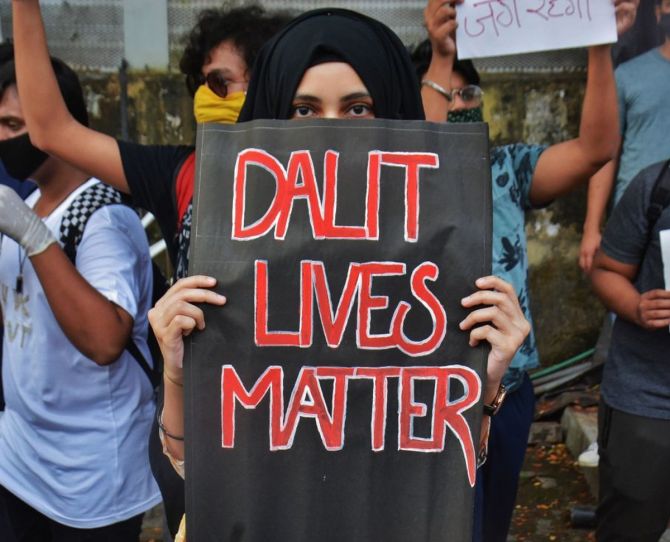
The recent brutal attack on a 17-year-old school student and his 14-year-old sister in their home at Nanguneri in southern Tamil Nadu is a demonstration of what has gone inherently wrong with the state's much-acclaimed Dravidian polity, politics and philosophy, centred on 'social justice' for over a hundred years.
The shocking part of it all was that the attackers were all fellow school students, as young or old as the victim.
They had seemingly taken exception to the targeted victim, a Dalit, complaining to the school authorities about continual harassment at the hands of his schoolmates who were from the intermediary Thevar/Mukkulathore community.
The police have arrested six students, all minors under the law, and Chief Minister M K Stalin's administration has announced medical care for the victims and government jobs when they both cross 18.
Politically, state BJP chief K Annamalai and some pro-DMK social media activists have branded respective party affiliation to family members of one or other of the attackers -- going to show how cheap politics for and against the Dravidian milieu can denigrate to.
Stalin has since announced the constitution of the Justice K Chandru committee to suggest ways to end caste differences in schools.
The actionable part of the committee's recommendations would be worth following.
Tamil Nadu is the celebrated home of the 'social justice' movement in the country, yet caste differences and violence has only been increasing in numbers and becoming more brutal in recent years.
While claiming massive successes in the field, the Dravidian polity, especially the alternating governments of the DMK and the AIADMK for over 50-plus of the past 56 years since 1967, have not curbed the abhorrent practice.
This owes to the lack of political will, owing mainly to the fact that the 'dominant' non-Dalit castes in individual communities and villages across the state are the mainstay of all non-Dalit political parties, colour and hue notwithstanding.
Among them, the Congress alone had the historic commitment that pervaded down the line over the early decades, to 'protect and promote' the Dalits -- and relatively better acceptance for the community, all across.
The departure of the Congress from the seat of power meant that the community migrated to the AIADMK founded by actor-politician MGR.
From then on, the Dalits co-existed as party voters, but that did not extend to co-existence at the community-level.
It remains so thus far in every political party barring the PMK, the backward Vanniyar-dominated outfit in the north and parts of the west, with the community's continuing antagonism towards the Dalits.
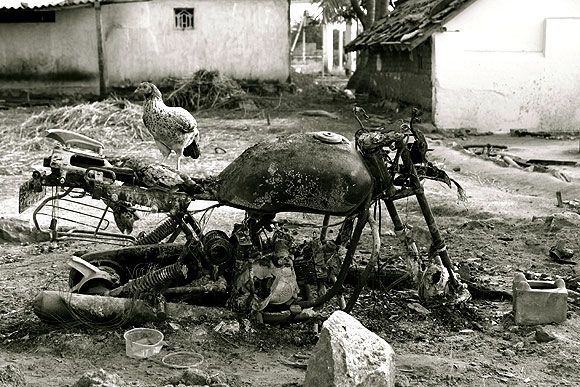
The advent of free school education under the Kamaraj-led Congress government in the mid-1950s and the state's largesse extending to cover under-graduate college courses, followed by the relatively free availability of professional college seats meant that all communities (at times barring the forward castes) stood to benefit.
This has only led to caste divisions entering the campuses, though not always understood or acknowledged by the authorities.
In between, the emergence of Dalit political outfits was marked only by intra-divisions within what Gandhiji unified as 'Harijans', weakened their collective political voice, but after giving an illusion of political self-assertion at local levels.
This meant that a non-Dalit/anti-Dalit communal collective began dominating the caste discourse, and took it back to the regional level first and later to the village-level, from where it had all germinated in the first place.
Thus, the Adi Dravidar Dalits in the north have their Vidhuthalai Chiruthaigal Katchi (VCK), while their Devendra Kula Vellalar (DKV) brethren in the south have their Puthiya Tamizhagam (PT).
The third group, the Arunthathiyars in the west and south-central neither politically consolidated, nor did the existing Dalit parties tried -- for reasons, best known to them.
What does it all mean in the contemporary context?
First and foremost, Gandhiji's call for the uplift of the under-privileged sections, including women and Dalits under the Indian National Congress, whose leadership at local levels was dominated by the upper castes, starting with Brahmins of various hues, created a new social consolidation that left the 'intermediary castes' out of the equation.
This was true of other states and regions too, as became evident with the social support-base of the Socialist Party in the post-Independence scenario.
The difference in what constitutes present-day Tamil Nadu was the presence and dominance of the anti-Brahmin, anti-Congress Justice Party in the early years of Gandhiji's arrival on the national political scene.
The Justice Party was led by non-Brahmin upper caste elite in the then Madras Presidency.
The equally fast-tracked exit of the Justice Party after the Congress contested and won the 1937 election ended the upper caste dominance of the non-Brahmin socio-political discourse.
The Justice Party then passed on to the ICU care of Periyar E V Ramaswamy Naicker, who was both a believer and a Congressman before beginning to oppose both in the mid-twenties.
The caste dynamics of the Dravidar Kazhagam that he founded in 1942 and into which he merged the Justice Party, had expanded to cover the intermediary castes -- almost for the simple reason that they could not accept the emergence of the Dalits, especially after the advent of universal adult franchise and 'reserved seats' under the new Republic.
Owing to this unacknowledged social reality, too, Periyar had to focus his social ire only on the Brahmins, who anyway dominated the societal discourse of the time at all levels.
After Periyar's DK came the breakaway DMK (1949), out of which MGR founded the AIADMK in 1972.
Other than symbolisms like 'abolishing the two-tumbler' system in village tea-stalls (where Dalits were served in separate containers, often coconut shells), and non-serious enforcement at the grassroots-level, nothing has changed. Thankfully, the advent of 'paper cups' has put an end to the Dalit ignominy in this instance.
Post-Independence, post-Congress history in the state witnessed the Keezhvenmani incident in which a 'caste Hindu' landlord burnt alive 44 Dalit farm labour, including children, in a hut, for demanding higher wages, egged on as they were by the emerging Left movement at the grassroots level. That was in 1969 in the Cauvery delta.
Then there was the Dalit-to-Muslim Meenakshipuram conversions (1981), in the unified Tirunelveli district, now in the trifurcated Tenkasi district, disowning casteist slur at the hands of the intermediary Thevar community.
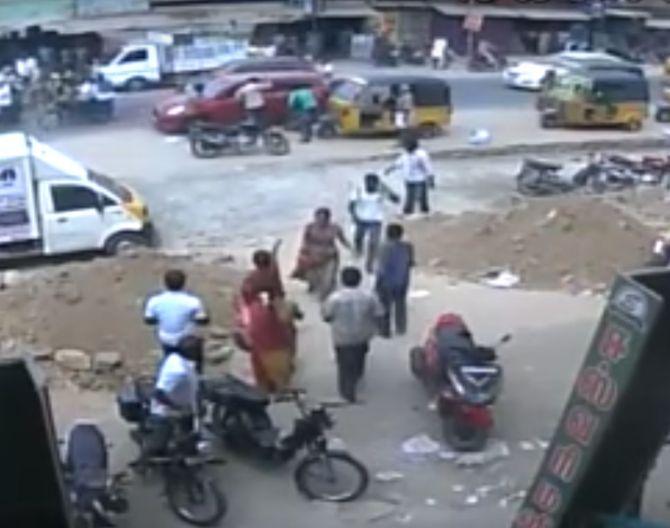
It is another matter that most converts in the village continued to practise their old religious rituals even a decade later and more.
Incidentally, free school education from before Independence, which the Congress rule under Kamaraj consolidated as a government-aided programme in the mid-fifties, followed by free noon-meal by then chief minister MGR in the seventies, which in turn was consolidating the Kamaraj scheme for the purpose as a 'budgetary scheme', meant that the Dalits were there at the take-off stage when successive governments under Karunanidhi and MGR since introduced free collegiate education and the like.
The intermediary castes, who were overshadowed by the non-Brahmin elite in the Justice Party era were slow in catching up, with the result the Dalits with no property to call their own in Meenakshipuram, for instance, took up unskilled and semi-skilled jobs when the Gulf region opened up in the seventies.
The financial security that the community began enjoying in doses, coupled with the Constitutionally-mandated reservations scheme, led to self-awareness first and self-assertion later on.
It was/is this that was/is at the centre of caste clashes in rural Tamil Nadu, as the 'intermediary' backward and most backward (BC/MBC) communities did not make full use of the 'new reservations' that the First Amendment to the Constitution had promised as early as 1951.
The First Amendment became possible following competitive DK-DMK protests in these parts, after the Supreme Court abolished the non-Dalit reservations initiated by the Justice Party government in the mid-twenties.
Incidentally, the verdict in the Champakam Dorairajan case (1951) also abolished the 16-per cent quota that the Justice Party scheme had given to Brahmins -- for which the community, till today, continues to blame the Dravidian polity.
From nascent politics with domineering elitist community leaders dominating centuries-old caste equations in the past, today castes dictate politics across rural Tamil Nadu.
If Gandhiji and the Congress took the party and the ideology to the Dalits, among others, it was the other way round in the case of the post-Justice Party Dravidian polity.
Those communities, almost always intermediary castes, gravitated towards the DK and the DMK in their formative years for the simple and straight reason that both opposed the Congress, which in turn had become the protector and propagator for the nation's Harijan/Dalit community.
Anti-Brahminism was not core to the social existence of the intermediary castes, they were anyway god-fearing and all, hence Periyar's anti-Brahminism did not sell itself in electoral terms as is often misunderstood, especially outside Tamil Nadu.
If they were in the Congress party in those early days, intermediary caste leaders too whole-heartedly supported the freedom movement -- and by extension Dalit ascendancy in the social structure.
Where they began differing with the Congress after the targeted freedom goal had been achieved, they either went back into a shell or joined such other forces that were emerging as an anti-thesis to the Congress.

This meant that social movements like Periyar's DK, out of which was born the politico-electoral entity called the DMK, had to cater/pamper to the social equations that their emerging support-base expected out of them.
This is so despite Periyar's 'social justice' agenda, which is celebrated more than what it had achieved in real terms.
It owed to the fact that barring Periyar's anti-Hindi cause, his anti-Brahmin, anti-god agenda did not have too many takers as is being misunderstood.
What mattered in the end was that 'Periyarites' skipped caste differences within the larger Hindu community, especially Dalit uplift.
True, they did not oppose 'Dalit uplift', the community having constituted a quarter of the state's population -- and hence electorate -- but did not do so openly and whole-heartedly like the Gandhian era Congress leaders.
The reason was obvious. In its formative years, 'Gandhiji's Congress' (as different from that before his time) went to the Dalits to propagate their uplift, maybe as an unacknowledged anti-thesis to the existing social structure across the country.
Instead, the intermediary castes gravitated towards the Dravidian polity, once it was off the clutches of the non-Brahmin upper caste elite.
Both needed each other, but in the case of the Dravidian polity, supporting communities dictated the polity and directed the socio-electoral discourse from then on.
It was unlike in the case of the Congress experience, where the party guided the community, Dalit and non-Dalit alike, but with an 'inclusive socio-political agenda' of its own.
In the course of the post-Independence transition and transformation, Congress leaders like Kamaraj had personal socio-political agendas that could today be dubbed 'Mandalisation'.
Across the state, intermediary castes, without the outside world knowing it, had reasons to gravitate towards the DK/DMK, in the years before and immediately after Independence.
The case of the Mukkulathore community in Kamaraj's southern region is a case in point, after the post-imprisonment death of the community's all-time tall leader Pasumpon Muthuramalinga Thevar, which was attributed near-exclusively to caste equations between two backward communities -- Kamaraj being a Nadar from the southern-most districts.
When DMK Chief Minister M Karunanidhi too sought to consolidate his personal hold over the party and government in the early to mid-seventies (like Kamaraj before him), he began sidelining established intermediary caste leaders in the party, who had their own caste/region-based hold and support-base.
This had nothing to do with 'caste politics', as understood but owed only to the leader's sense of insecurity -- as became visible in his later-day feud with MGR.
This was among the reasons why the Mukkulathore in the south and Gounders in the west gravitated towards the AIADMK, when MGR founded it -- just as they had backed the DMK after the Kamaraj-Muthuramalinga Thevar political tiff, which had a caste element hiding somewhere.
Again, self-proclaimed social identity, and not political ideology, alone was involved.
Where the intermediary Vanniyar community alone remained with the DMK for long, at the first available opportunity, a medical doctor with grassroots-level contacts founded the PMK in the early nineties, which has a crucial five per cent committed vote-bank, whether or not the party is able to decide the fate of election results in the state.
Today, there aren't any tall leaders with a larger reach, like Kamaraj and Karunanidhi, MGR and his political successor Jayalalithaa, however caste-conscious they otherwise maybe.
It is another matter that none of these leaders tried to address caste differences as a major structural fault in the state's social milieu -- and sought to rectify the same.
The present-day leadership of various political parties are all a shade of their predecessors.
There is greater decentralisation of leadership back to the grassroots level, as in the early days of the Congress and the DMK -- still with no leader in commanding heights to set the house(s) in order even if they so desired. That they did not desire it in the past, nor do they intend doing it today, is the crux of the problem.
This is what the larger socio-political message is, as witnessed in Naguneri now, and the series of 'honour killings' in different parts of the state, where it was not known until recent years.
If until recently, some non-Dalit communities killed their new-born female for inherited reasons that do not make sense, today, they let that girl live and grow, educate and employ, only to kill her, him or both -- just out of 'caste pride' if she falls in love with a 'Dalit' boy.
Thereby hangs a long tale!
N Sathiya Moorthy, veteran journalist and author, is a Chennai-based policy analyst & political commentator.
Feature Presentation: Rajesh Alva/Rediff.com


